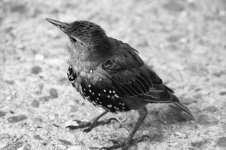christineredgate
Winner of the Copeland Wildlife Photographer of th
Reading these posts with great interest.when I first began birding,my binoculars were my most important piece of equipment,then came the scope,suddenly a camera was added,attached to the scope.then came an affordable DSLR,the Canon 300D,anyone remember this little gem?.Cost a fortune as opposed to today's DSLR's.Suddenly when out and about birding,one had to return with a card full of shots,not content to just view the bird through ones binoculars/scope,but one must have a shot.
Sometimes I do just go out and about without a camera,so as to enjoy seeing the birds,but somehow this digital photography really is very addictive,and I wonder is it taking us away from really enjoying seeing the birds as such,and not just seeing them as a subject for the "photo of the day",as it were.
Sometimes I do just go out and about without a camera,so as to enjoy seeing the birds,but somehow this digital photography really is very addictive,and I wonder is it taking us away from really enjoying seeing the birds as such,and not just seeing them as a subject for the "photo of the day",as it were.





